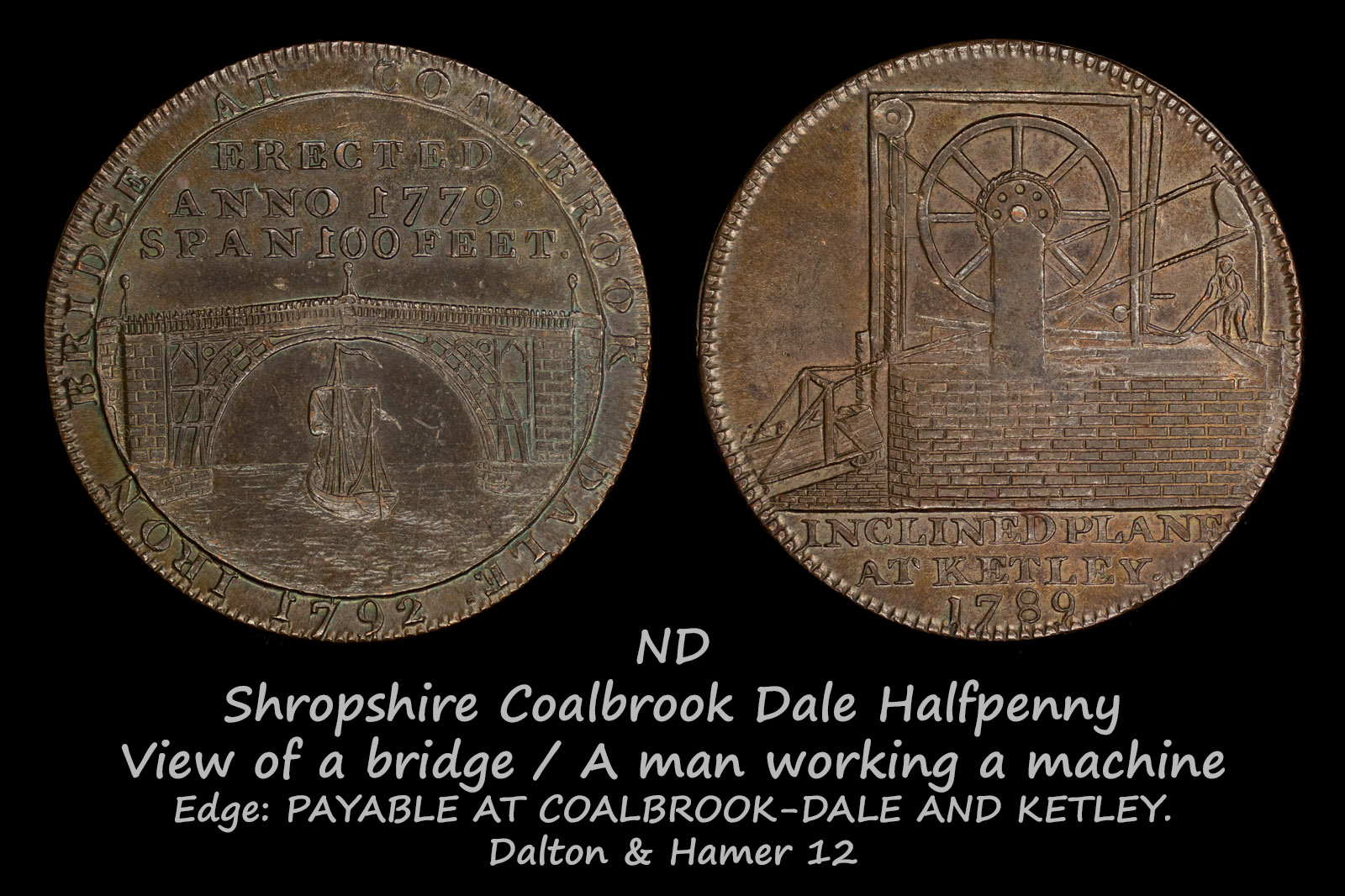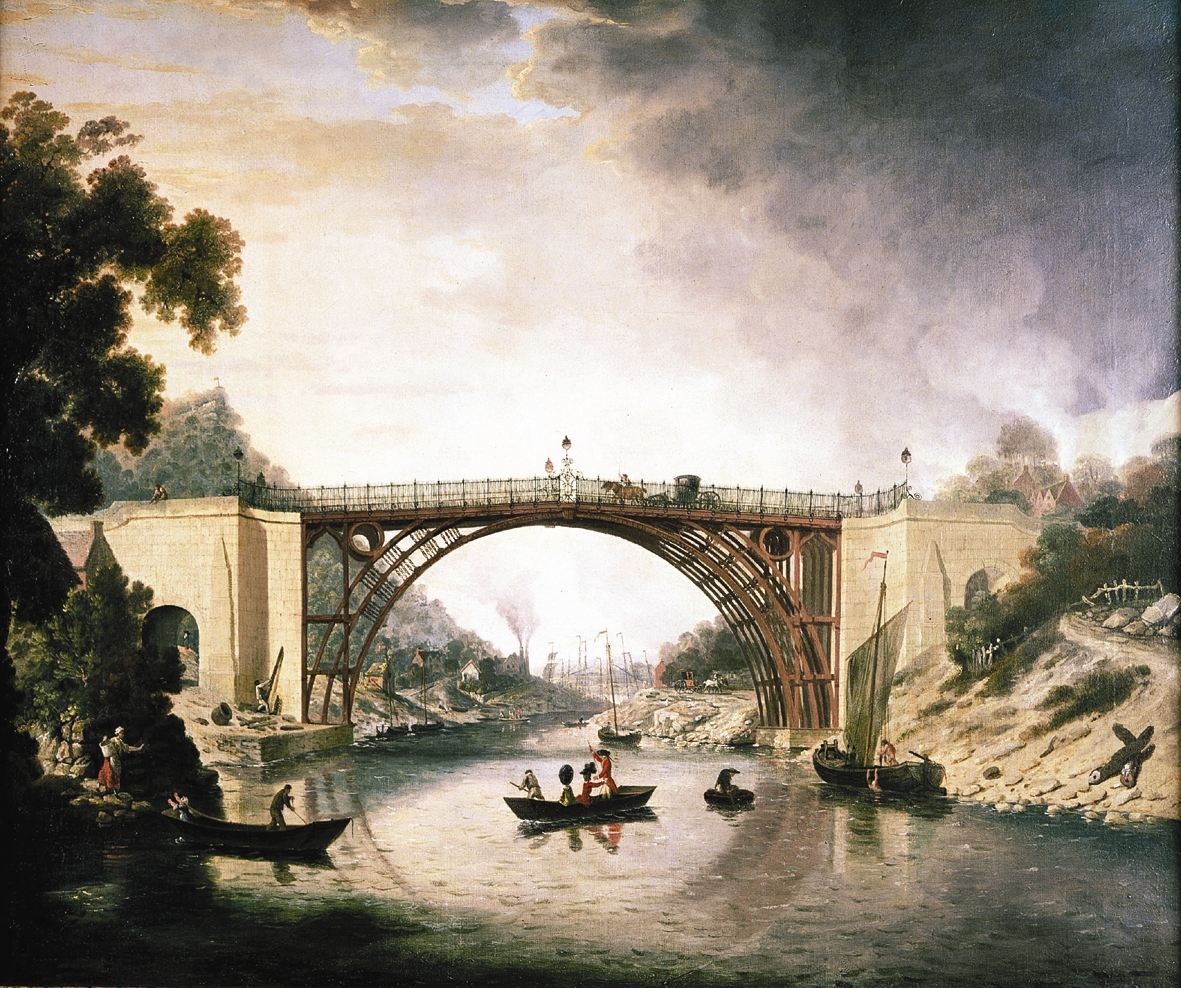
Online collections
monedastodas.com
All collections » Tokens » Coalbrook Dale Halfpenny
The obverse depicts the cast-iron Iron Bridge over the River Servern near Coalbrookdale with a sailing barge passing under it.

The Iron Bridge, built in 1779, was the first cast iron arch bridge in the world. The construction of the bridge was made possible by the iron foundries located in the area, owned by John Wilkinson (John Wilkinson 1728-1808) and architect Thomas Pritchard (Thomas Farnolls Pritchard 1723-1777) who created the project. The bridge consisted of more than 800 cast-iron elements cast separately, with a total weight of about 380 tons. In 1780, Abraham Darby III (1750–1789), manager of the Colbrookdale iron foundry, paid the artist William Williams (William Williams 1727–1791) 10 guineas to depict the new bridge in his painting.
 Cast
Iron Bridge near Coalbrookdale by William Williams, 1780
Cast
Iron Bridge near Coalbrookdale by William Williams, 1780The reverse side depicts a man lowering a loaded boat down an inclined plane with the help of a rotating mechanism.
The Ketley Canal, built in 1788, had a very short length - only a mile and a half. It was built for small metal Tub Boats, up to 20 feet long and 6 feet wide, and served to transport coal and iron ore from the mines at Oakengates to the ironworks at Ketley. The canal was used for a rather short time and was closed in 1816, but, nevertheless, it was not just a dug ditch filled with water. The Ketley Canal had a 73-foot drop at a length of 65 yards, and it proved impossible to create a lock system to overcome this height - instead, William Reynolds decided to build an inclined plane. Along the entire length of the height difference, two parallel railway tracks were laid with a cable hoist in the upper part. Loaded boats sank down under the influence of their own gravity, lifting up the empty ones. It was the first operational downhill cargo channel in the UK.
The token was issued by the steel company Reynolds and Co in Shropshire and accepted as payment in Colbrookdale and Ketley, where the company's headquarters were located.